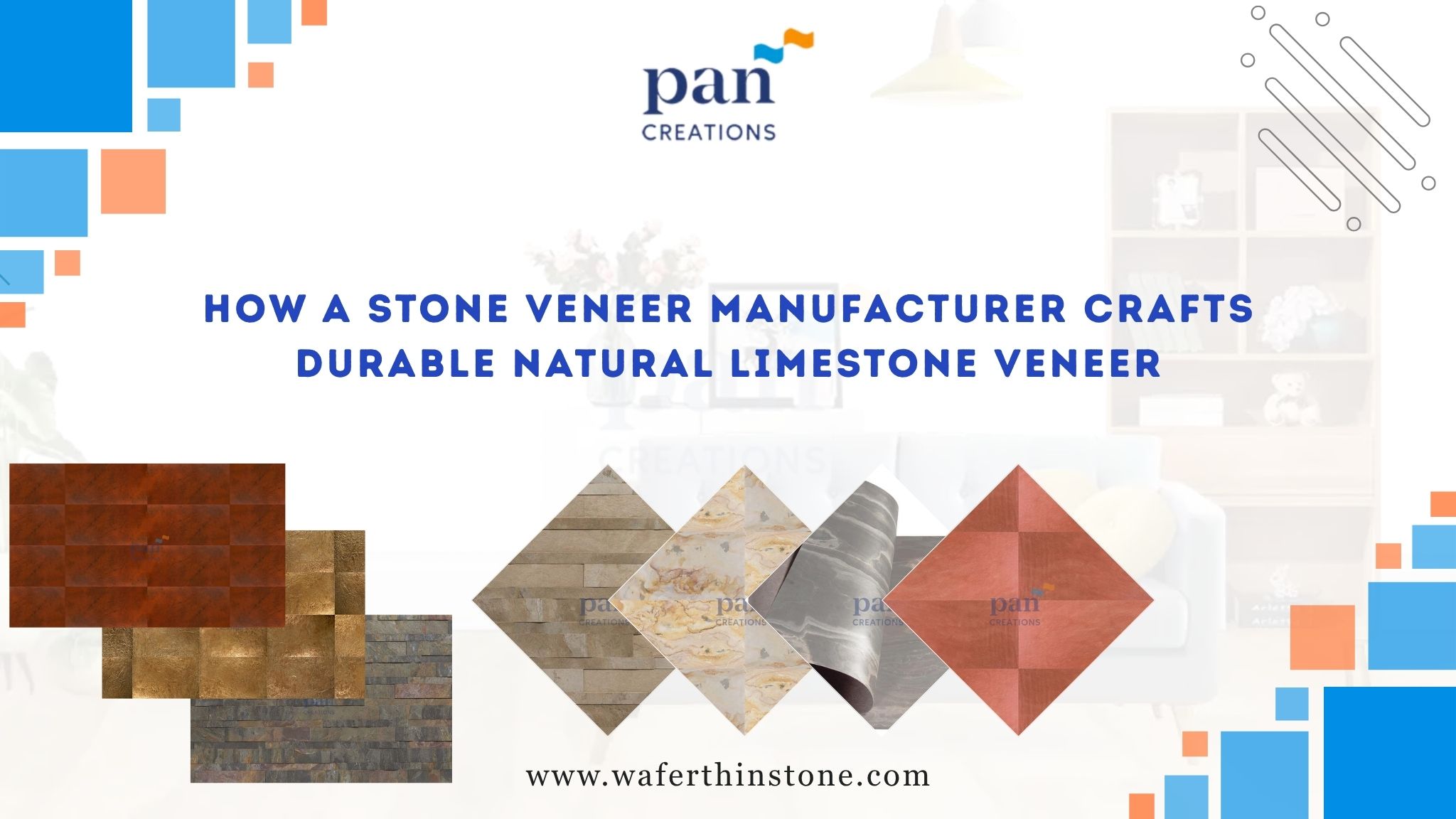Natural limestone veneer serves as a key material in contemporary building projects, providing both aesthetic appeal and structural integrity. Contractors and architects select this option for its ability to mimic full thickness stone while reducing overall project weight. Businesses benefit from its integration into facades, interior accents, and landscaping features, where it enhances visual interest without compromising on longevity.
The process behind creating this veneer starts with careful material selection from established quarries. Teams focus on limestone deposits that exhibit consistent color tones and minimal natural flaws. This initial step ensures that the final product meets the demands of high end installations, from residential homes to commercial developments.
Sourcing Raw Materials for High Quality Veneer
Quarrying operations target specific limestone strata known for their density and resistance to environmental factors. Workers extract large blocks using precision tools to minimize waste and preserve the stone’s inherent qualities. Once at the processing facility, these blocks undergo initial sorting based on grain structure and veining patterns.
Quality control begins here, with samples tested for porosity and compressive strength. Only blocks passing these assessments proceed, guaranteeing that the veneer withstands freeze thaw cycles and moisture exposure common in outdoor settings. This rigorous selection process directly impacts the durability of installations, allowing businesses to specify materials that require less frequent maintenance.
Quarrying Techniques Employed by Stone Veneer Manufacturers
Stone veneer manufacturers employ advanced wire sawing methods to cut blocks into manageable slabs. These techniques produce clean edges and reduce dust generation, aligning with modern environmental standards. Operators monitor vibration levels to avoid micro fractures that could weaken the material over time.
After cutting, slabs move to inspection stations where technicians identify and remove imperfections. This hands on approach ensures uniformity, which proves essential for large scale projects where matching pieces across surfaces maintains a cohesive appearance. Such precision supports efficient on site assembly, cutting down labor costs for installation teams.
Initial Processing and Slabbing Operations
Slabs receive a preliminary cleaning to eliminate surface contaminants picked up during quarrying. Water jets and mild abrasives prepare the stone without altering its natural texture. From there, diamond infused blades slice the slabs into thin sheets, typically ranging from 1 to 3 millimeters in thickness for flexible applications.
Stone veneer manufacturers calibrate blade speeds based on limestone hardness to achieve even thickness throughout. This step demands constant oversight to prevent overheating, which might lead to thermal stress in the material. The resulting sheets retain the limestone’s subtle fossils and layering, features that add character to finished veneers used in feature walls or counter edges.
Backing Application for Enhanced Stability
To bolster the thin sheets, applicators adhere a flexible backing material, often cellulose or fiberglass mesh. This layer distributes stress evenly, preventing cracks during handling or curving around architectural elements. Adhesives chosen for this purpose bond strongly yet allow breathability, crucial for applications in humid climates.
Workers apply the backing under controlled pressure using rollers to eliminate air pockets. This method ensures the veneer flexes without delaminating, a common issue in lesser products. For businesses, this stability translates to reliable performance in curved installations, such as column wraps or rounded bar fronts, expanding design possibilities.
Quality Assurance in Veneer Production
Every batch undergoes visual and mechanical testing to verify adhesion strength and flexibility. Samples bend to specified radii without failure, simulating real world use on non planar surfaces. Color consistency checks involve spectrophotometry to match against reference standards, avoiding variations that could disrupt project aesthetics.
Stone veneer manufacturers document these tests for traceability, enabling clients to reference performance data during bidding processes. This transparency builds trust with architects who prioritize verifiable metrics over anecdotal claims. Operational benefits include reduced rejection rates on site, streamlining workflows for contractors.
Advanced Cutting and Shaping Methods
Specialized waterjet cutters shape the veneered sheets into tiles or custom profiles. High pressure streams infused with abrasives follow digital templates, allowing intricate patterns for mosaic effects or edging details. This technology minimizes material loss, optimizing yield from each slab.
Post cutting, edges receive light beveling to facilitate seamless jointing. Stone veneer manufacturers integrate CNC routing for repetitive shapes, boosting production efficiency for volume orders. These capabilities support diverse business needs, from bespoke residential features to standardized commercial panels.
Surface Finishing Techniques for Varied Textures
Finishing imparts the desired tactile and visual qualities, with options ranging from honed to textured surfaces. Honed finishes smooth the face for a matte look, ideal for indoor settings where glare reduction matters. Textured variants, achieved through tumbling or bush hammering, enhance grip for exterior walkways.
Artisans select finishes based on end use, balancing slip resistance with cleaning ease. Stone veneer manufacturers test each type for colorfastness under UV exposure, ensuring longevity in sunlit areas. This customization allows businesses to tailor selections to specific environments, like patios or lobby accents.
Packaging and Shipping Logistics
Finished veneers pack into protective crates with foam dividers to prevent shifting during transit. Labeling includes orientation markers and handling instructions, aiding quick unpacking on job sites. Moisture barriers wrap individual bundles, safeguarding against humidity fluctuations en route.
Stone veneer manufacturers coordinate with logistics partners for just in time delivery, minimizing storage needs for clients. This efficiency reduces holding costs for developers and ensures fresh material arrival, preserving peak condition. Practical advantages emerge in faster project timelines, as crews avoid delays from damaged shipments.
Durability Testing Protocols
Rigorous simulations expose samples to accelerated weathering, including salt fog and thermal cycling. Metrics track weight changes and surface integrity post exposure, confirming resistance to degradation. Field trials on prototype installations gather long term data, refining future production runs.
These protocols verify that the veneer endures 50 plus years in moderate climates with proper installation. Businesses gain confidence in specifying it for premium developments, where warranty periods extend based on such validations. Operational savings accrue from lower repair frequencies over the asset’s lifecycle.
Installation Best Practices for Optimal Performance
Installers prepare substrates by ensuring level, clean surfaces free of contaminants. Thin set mortars compatible with the backing provide secure adhesion, applied in a ribbed pattern for even coverage. Panels press into place with light tapping, allowing excess mortar to squeeze out for full contact.
Grouting follows with flexible compounds that accommodate minor movements from settling. Sealing optional topcoats protect against staining in high use areas, applied sparingly to maintain breathability. These steps ensure the veneer performs as intended, supporting business goals for durable, low upkeep features.
Operational Benefits in Commercial Applications
In retail environments, natural limestone veneer lines display walls, drawing customer attention with its subtle warmth. Restaurants apply it to backsplashes, where it handles daily spills without losing vibrancy. Hotels incorporate panels in lobby dividers, creating zones that feel expansive yet intimate.
These uses highlight cost efficiencies, as the lightweight nature cuts framing requirements compared to solid stone. Maintenance crews appreciate the wipe clean surfaces, reducing downtime in busy operations. For property managers, this means sustained appeal that boosts occupancy rates and tenant satisfaction.
Residential Use Cases and Design Integration
Homeowners clad fireplace surrounds with natural limestone veneer, transforming focal points into heirloom quality elements. Kitchen islands gain dimension from wrapped bases, blending seamlessly with cabinetry lines. Outdoor living spaces feature it on pergola posts, extending indoor aesthetics to patios.
Designers mix veneer sizes for dynamic patterns, like herringbone layouts that add movement to bland walls. This versatility aids in personalizing spaces within budget constraints, appealing to renovation focused households. Builders report quicker closes on sales when showcasing such upgrades, enhancing market competitiveness.
Sustainability Practices in Production
Sourcing emphasizes replenishable quarry sites with restoration plans in place. Water recycling systems in processing plants cut consumption by up to 80 percent, aligning with green building certifications. Waste stone repurposes into aggregate for site backfill, closing the loop on materials.
Energy efficient kilns for any heat treatments lower carbon footprints, while solar powered facilities offset grid reliance. Natural limestone veneer thus positions as an eco choice for LEED projects, helping firms meet regulatory incentives. Businesses leverage this for marketing narratives that attract environmentally conscious clients.
Cost Analysis and Return on Investment
Initial outlays for natural limestone veneer run lower than full bed stone due to thinner profiles and simpler transport. Labor savings from easy cutting and adhesion further trim totals, often by 30 percent on comparable jobs. Long term, minimal upkeep offsets any premium over synthetic alternatives.
ROI calculations factor in property value uplifts, with veneered features recouping costs within two years via higher appraisals. For commercial tenants, durable finishes mean fewer interruptions, preserving revenue streams. These financials make it a strategic pick for value driven portfolios.
Innovation in Veneer Customization
Stone veneer manufacturers now offer digital printing for subtle color enhancements, expanding palette options without dyes. Laser etching imprints patterns directly, ideal for branded commercial spaces. These advancements keep products relevant amid shifting tastes.
Clients collaborate on prototypes, testing fits before full runs to avoid rework. Such tailoring supports niche markets, like hospitality chains seeking signature looks. Operational gains include faster prototyping cycles, accelerating project bids and executions.
Must Read: How to Incorporate Mosaic and Metallic Stone Veneers into Your Home Design
Maintenance Strategies for Longevity
Routine dusting with soft brushes prevents abrasive buildup on surfaces. Annual inspections check for loose edges, addressed promptly with targeted re adhesion. Avoid harsh chemicals, opting for pH neutral cleaners to preserve natural patina development.
In coastal areas, quarterly rinses remove salt residues, extending service life. These simple protocols empower owners to maintain peak condition, minimizing professional service calls. For businesses, this reliability underpins leasing agreements with extended warranties.
Frequently Asked Questions
Q1. What sets natural limestone veneer apart from synthetic stone options?
Ans: Natural limestone veneer derives from quarried rock, offering authentic textures and colors that evolve over time. Synthetics often lack this organic variation and may yellow under prolonged sun exposure.
Q2. How thin can panels from a stone veneer manufacturer be produced?
Ans: Stone veneer manufacturers achieve thicknesses as low as 1 millimeter for flexible variants, enabling applications on curved surfaces without added weight.
Q3. What installation surfaces work best with natural limestone veneer?
Ans: Natural limestone veneer adheres well to drywall, concrete, and plywood substrates, provided they remain stable and free of moisture issues.
Q4. How does a stone veneer manufacturer ensure color consistency across batches?
Ans: Stone veneer manufacturers use calibrated quarrying and digital matching to maintain uniformity, with samples provided for approval before shipping.
Q5. What are common applications for durable natural limestone veneer in commercial settings?
Ans: Natural limestone veneer suits retail facades, office lobbies, and restaurant interiors, where its resilience supports high foot traffic and easy cleaning.
Q6. Why choose a specialized stone veneer manufacturer like Pan Creations?
Ans: Stone veneer manufacturers such as Pan Creations focus on flexible formats that simplify handling and installation, ideal for complex designs.

